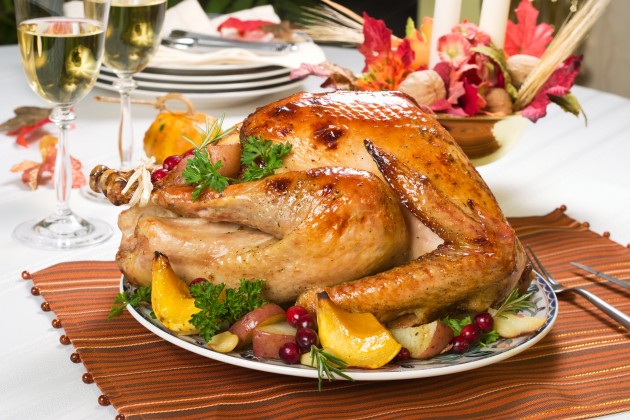You really can enjoy a festive feast and still fit into your little black dress this holiday season…
If you plan ahead, you can have tasty nibbles around the house that won’t go straight to your waistline. And the full traditional Christmas fayre is all there for the taking; just be aware of which bits of the meal you pile onto your plate first, and your portion size….
Think before you reach – by the time you’ve got all the trimmings on your plate, it’ll be overflowing with extra calories. So serve yourself the veggies first, not the meat and potatoes; indulge in larger portions of sprouts, parsnips and carrots, then go for and turkey breast without the skin. Choose the bigger roast potatoes, as they will have absorbed less fat. Eat slowly and enjoy every bite. Leave room for some refreshing juicy clementines to round off your meal and cleanse your palate.
So, what’s in a Christmas dinner?
You might be surprised to know that many traditional Christmas treats are healthy foods, low in calories and high in health-promoting vitamins, minerals and phytonutrients.
Roast turkey without skin is high in protein and low in fat with only 150 kcalories in an average portion and potatoes provide lots of vitamin C as well as fibre. Believe it or not, on Christmas day you’ll probably have your ‘5 a day’ portions of fruit and vegetables without even trying. Orange juice (or Buck’s Fizz!), brussels sprouts, peas, carrots and satsumas all provide important health promoting compounds (anti-oxidants and phytochemicals). Just glance at this list to see how those tempting mouthfuls can be good for you too:
Smoked salmon – This tasty treat provides only 80 calories per portion, and is a good source of protein and the health promoting omega-3 fats. Ideal as a starter.
Roast Turkey – Rich in protein and low in fat, especially if you discard the skin and choose light-coloured meat – only 150 kcalories in an average portion.
Potatoes – A delicious source of vitamin C and other nutrients. If roasting, use vegetable oil or spray oil rather than lard to cut saturated fat. Keep the skins on if you want added fibre.
Brussels Sprouts – An average serving (9 sprouts) provides half of your daily needs for folic acid and all the vitamin C you need.
Carrots – Rich in beta-carotene, which is converted to vitamin A in the body. This and the other carotenoids act as potentially disease-beating antioxidants. Choose them steamed or boiled, or as crudite before you each the main course.
Peas – Popular with the kids and a good source of vitamin C, iron, fibre, folic acid and other B vitamins. Steam them in the minimum of water using a tight fitting lid.
Christmas Pudding – The dried fruit gives plenty of potassium, and it’s a reasonable provider of iron and fibre. If you’re making your own, you may not even need to add sugar, as there’s plenty of sweetness in the dried fruit.
Custard – A comforting and low fat alternative to brandy butter, and a good source of calcium too. Choose skimmed or semi-skimmed milk.
Nuts – A great source of unsaturated oils, fibre and the antioxidant vitamin E. Research shows that peanuts can lower blood cholesterol and that nut consumption is associated with lower risk of Type 2 diabetes in women. The research used about a handful or an ounce a day as part of a healthy lifestyle. Chestnuts are the only low fat nut in existence and great for roasting by the fireside.
Clementines – Each of these handy stocking fillers provides half your daily needs for vitamin C. Try some in between meals when you feel peckish.
Check out my party tips on how to survive the buffet table.


